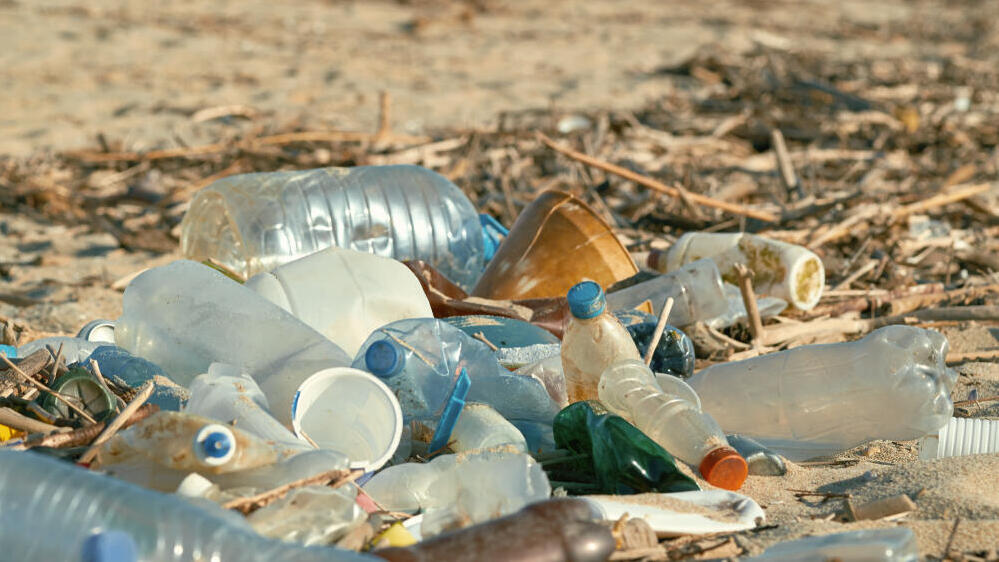A new study recently found that human brains contain higher concentrations of microplastics than other organs, with levels rising sharply over the years.
Published in the Nature Medicine journal, the study by researchers from the University of New Mexico and the University of Oklahoma found that microplastic levels in human brains have increased by 50% over the past eight years. Dementia patients had up to 10 times more plastic in their brains than others according to the findings.
“This study joins a growing body of research on the potential harm of plastic particle accumulation in the body,” said Dr. Nirit Lev, head of Meir Medical Center’s neurology department.
“We used to focus on risk factors like medical history, physical activity, smoking and weight. Now we have a nearly invisible new factor — plastic particles — that we still struggle to measure and understand,” she explained.
The study examined brain, liver and kidney samples, finding the highest plastic concentrations in the brain. In 2016, average brain plastic levels were 3,345 micrograms per gram; by 2024, they had risen 50% to 4,917 micrograms per gram.
Dementia patients had 7 to 30 times more plastic in their brains than in other organs. The most common polymer detected was polyethylene (PE), making up 75% of all plastic found. Microplastics were also found in blood vessels and immune cells, with notable increases in the liver.
Dr. Lev noted that “findings have also shown that people with plastic particles in their carotid arteries—the main blood vessels supplying the brain—were at increased risk of stroke.”
Microplastics, tiny polymer particles from environmental sources such as air, water and soil, have previously been found in the human body. “Microplastics enter our bodies from various sources,” said Dr. Lev.
“We eat them, drink them and inhale tiny airborne particles. It's nearly impossible to avoid exposure, as plastic particles are everywhere in the world, though some areas may be more or less polluted.”
However, she added there are ways to reduce exposure. “First, avoid heating food in plastic containers in the microwave, as heat can release particles,” she said. “Also, don’t leave food or drinks in plastic containers exposed to high temperatures, like inside a car in the sun. Frequent use of a scouring pad can wear down plastic utensils and release microplastics, so it's best to avoid that.”
“In recent years, certain molecules in plastic have been identified as harmful to our health, such as those removed from baby bottles,” Lev said. “We’re now realizing that even common plastic polymers might be dangerous. While we can’t see these tiny particles, we can try to reduce our exposure. Using glass containers for food storage, limiting single-use plastics and avoiding heat exposure to plastic items can all help protect our health.”
The study analyzed brain, liver and kidney samples from 20–28 deceased individuals between 2016 and 2024 at the University of New Mexico's pathology lab. It also included 12 brain samples from dementia patients who died between 2019 and 2024 to examine links between microplastic accumulation and disease.
Get the Ynetnews app on your smartphone: Google Play: https://bit.ly/4eJ37pE | Apple App Store: https://bit.ly/3ZL7iNv
For long-term comparison, 28 additional brain samples were included from the eastern U.S., collected between 1997 and 2013. “This study highlights two alarming findings,” Lev said.
“First, people who died in 2024 had significantly higher plastic levels than those who died in 2016, suggesting rising exposure. Second, those with brain diseases like dementia and Alzheimer’s had more plastic in their brains.”
“With that said, it’s important to emphasize that this is a correlation, not necessarily causation,” she noted. “It’s possible that in diseased brains, the blood-brain barrier functions less effectively, allowing more plastic particles to enter.
“On the other hand, we can’t rule out the possibility that microplastic accumulation contributes to the development or worsening of neurodegenerative diseases. These are open questions that future research needs to investigate.”
The exact mechanism of microplastic penetration remains unclear, but researchers noted that plastic particles smaller than 200 nanometers are similar in size to viruses and small enough to cross the blood-brain barrier. The study identified 12 different plastic polymers, with polyethylene — the material found in packaging and plastic bottles — being the most prevalent.
Prof. Matthew Campen, one of the study’s authors, estimated that most plastic particles enter the body through food, particularly meat consumption. “The use of plastic-contaminated water in agriculture leads to plastic buildup in plants, which are then fed to livestock,” he said.
“Animal waste returns to the fields as fertilizer, creating a self-sustaining cycle of biological accumulation.” Meanwhile, the team also found high plastic concentrations in store-bought meat.
Regarding the high plastic levels found in dementia patients’ brains, researchers stressed that the study wasn't designed to prove a causal link between microplastics and the disease. “It’s possible that dementia itself causes plastic buildup in the brain, rather than the other way around,” they wrote.
“Brain tissue degeneration, blood-brain barrier damage and impaired waste removal mechanisms are hallmarks of dementia, which may contribute to increased microplastic accumulation in the brain,” the researchers added.
The findings raise serious concerns about plastic pollution’s impact on human health and highlight the need for further research and measures to reduce exposure.






